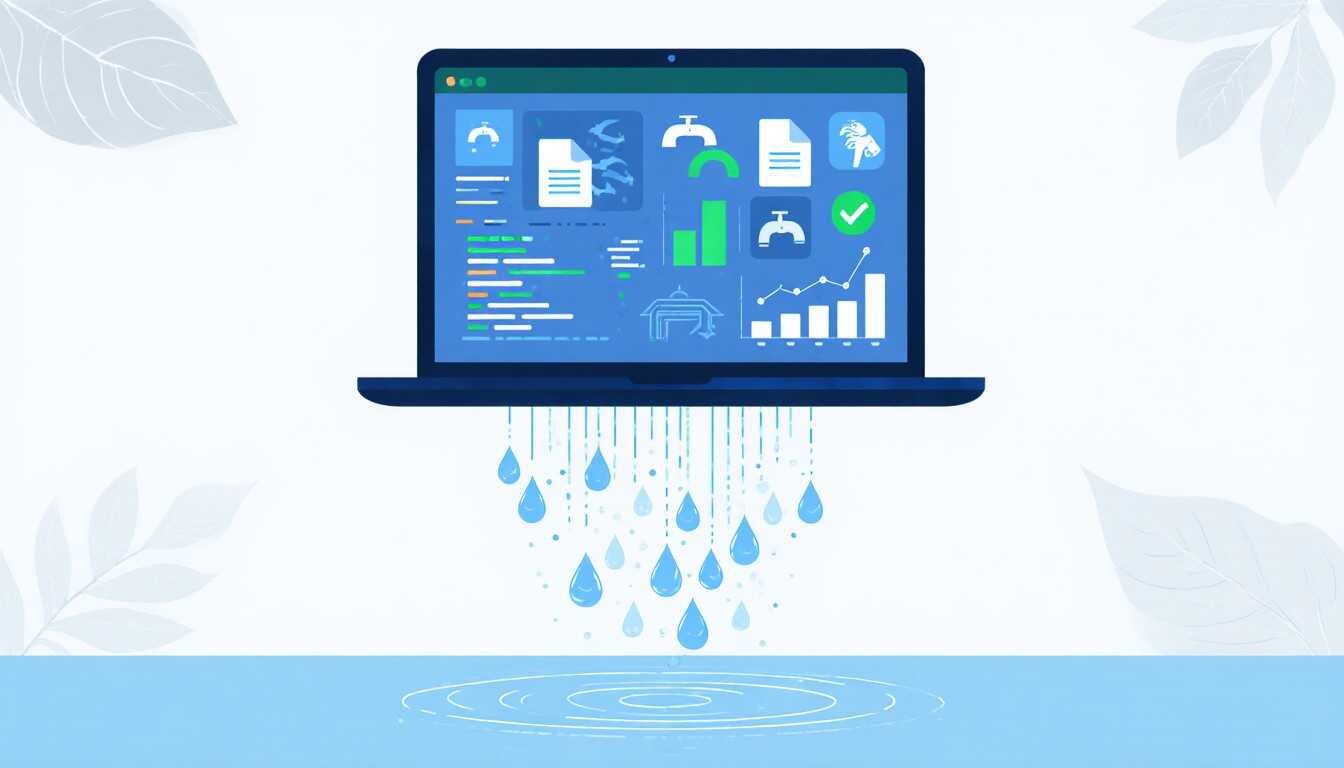In today’s rapidly changing world, the need for businesses to adopt carbon footprint tracking software has never been more urgent. As climate change becomes an increasing global concern, corporations are under growing pressure to take responsibility for their environmental impact. Carbon footprint tracking software provides an efficient way for companies to measure, monitor, and reduce their emissions, contributing to a sustainable future.
What is Carbon Footprint Tracking?
Simply put, a carbon footprint is the total amount of greenhouse gases (GHGs) emitted into the atmosphere as a result of human activities. It includes carbon dioxide (CO2), methane (CH4), and other gases that contribute to global warming. Every business, whether large or small, has a carbon footprint. Tracking it can give companies valuable insights into their environmental impact and help them make informed decisions to reduce emissions.
For businesses, understanding their carbon footprint is not just about environmental responsibility; it’s about aligning their operations with global sustainability goals. As companies strive to meet growing expectations from consumers, investors, and regulatory bodies, adopting carbon footprint tracking software is an essential step in driving positive change.
The Role of Carbon Footprint Tracking Software
As sustainability becomes a business imperative, carbon footprint tracking software is emerging as a powerful tool for real-time data collection, reporting, and emission reduction strategies. These software solutions help businesses capture detailed data on energy use, waste production, transportation emissions, and more. With intuitive dashboards and robust reporting features, businesses can track and manage their carbon emissions efficiently.
Moreover, carbon footprint tracking software enables businesses to take data-driven actions to reduce their environmental footprint. For example, businesses can identify high-emission areas in their operations, such as energy consumption in production facilities or carbon-heavy logistics, and implement targeted strategies for improvement.
Key Benefits of Using Carbon Footprint Tracking Software
Improved Sustainability and Corporate Social Responsibility (CSR)
By adopting carbon footprint tracking software, businesses can streamline their sustainability efforts and align them with their corporate social responsibility (CSR) goals. Tracking emissions allows companies to set measurable sustainability targets and monitor their progress. This, in turn, helps businesses fulfill environmental, social, and governance (ESG) obligations.
Sustainability-driven businesses are also more likely to attract and retain customers who value ethical and eco-friendly practices. For example, companies in the fashion industry that measure and track carbon emissions can showcase their commitment to sustainable production processes, gaining a competitive edge in the marketplace.
Real-Time Data for Better Decision Making
With the ability to access real-time carbon emission data, businesses can quickly identify opportunities to reduce their environmental impact. Carbon footprint tracking software provides actionable insights that enable businesses to implement strategies for energy savings, waste reduction, and emission cuts. This real-time access to data enhances decision-making, ensuring faster and more effective responses to environmental challenges.
How Carbon Footprint Tracking Software Works
Key Features to Look for in a Carbon Footprint Tracking Tool
When selecting carbon footprint tracking software, businesses should look for certain key features that enhance functionality and usability. Automated data collection and reporting, real-time carbon calculators, and customizable dashboards are among the must-have features. This software should integrate seamlessly with existing business systems, such as energy management platforms, to provide comprehensive and accurate data on emissions.
Types of Data Tracked by Carbon Footprint Software
Carbon footprint tracking software collects data on a variety of factors that contribute to a company’s carbon emissions. Common metrics tracked by these tools include:
- Energy consumption: Monitoring the amount of electricity, gas, and other energy sources consumed by a business.
- Transportation emissions: Tracking emissions from company vehicles, logistics, and supply chain operations.
- Waste management: Measuring emissions from waste production, disposal, and recycling processes.
- Supply chain emissions: Assessing carbon emissions along the supply chain and vendor activities.
By tracking these data points, businesses can gain a deeper understanding of their environmental impact and create targeted reduction plans.
Choosing the Right Carbon Footprint Tracking Software for Your Business
When selecting the right carbon footprint tracking software, businesses should consider a variety of factors. It’s essential to choose a solution that integrates well with existing systems and processes. Customizability and scalability are also key considerations, as businesses will need a tool that can grow with them as their operations expand.
Several carbon footprint calculator tools are available in the market, including industry-specific solutions tailored for sectors such as manufacturing, transportation, and retail. The right tool for your business will depend on its unique needs and sustainability goals.
Overcoming Challenges in Carbon Footprint Tracking
While carbon footprint tracking software offers a range of benefits, there are also challenges to consider. Data accuracy is a primary concern, as unreliable or incomplete data can undermine the effectiveness of sustainability efforts. To overcome this challenge, businesses should invest in high-quality tracking systems and ensure that their teams are well-trained in data collection and analysis.
The Future of Carbon Footprint Tracking
As technology advances, so too does the potential for carbon footprint tracking software. Emerging innovations like artificial intelligence (AI), machine learning, and blockchain technology are expected to revolutionize carbon tracking. These technologies can help improve data accuracy, enhance transparency, and streamline emissions reporting for businesses.
Conclusion: A Sustainable Future with Carbon Footprint Tracking Software
In conclusion, carbon footprint tracking software is a critical tool for businesses that want to reduce their environmental impact and contribute to a more sustainable world. By adopting this technology, businesses can make data-driven decisions, improve their sustainability efforts, and enhance their brand reputation.
The importance of early adoption cannot be overstated. By positioning themselves as leaders in sustainability, businesses can drive positive change, engage customers, and stay ahead of industry regulations.



